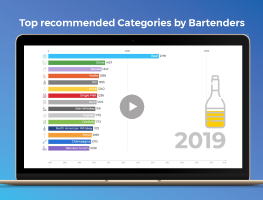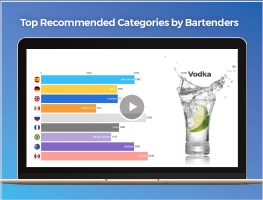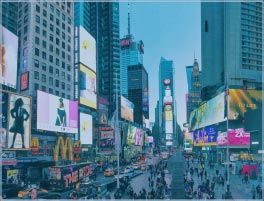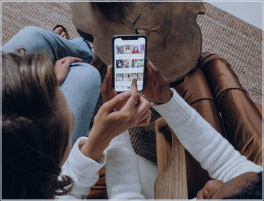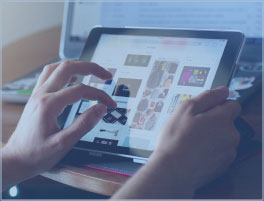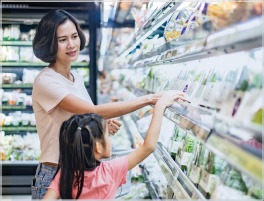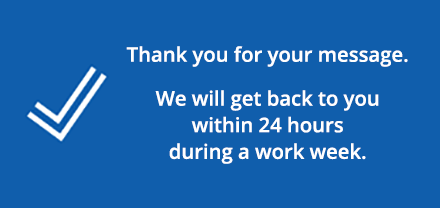“How has your bar adapted to the COVID-19 restrictions and lockdowns?” I asked a team of 5 seasoned bartenders from across the US during a recent panel discussion. Mary (from the Bay Area) and Megan (Chicago) have hosted virtual cocktail hours on behalf of their bars. Tyler has started serving to-go cocktails in Denver, reporting that frozen daquiris are a crowd favorite. Together with Justin and David from New York City, each of these bartenders have had their work and their livelihoods affected by closures or furloughs in the past months. As restrictions are beginning to lift in the US, bars and bartenders are forced to adapt to a new way of working. About half of our bartender panel has yet to open their bars. But when they do it’s going to look different than before, with consequences for staff, customers and suppliers too. What does this path to reopening look like for them? Even as bars start to reopen, life is not exactly returning to normal for bartenders. In order to accommodate social distancing, most bars are only able to serve 20-25% of their normal capacity. “Our bar can only fit 10 people to sit down to begin with. So you would always get your drink at the bar and go outside anyway,” says Tyler. His Denver bar had enough outdoor space that they were able to restructure an outdoor seating plan to allow guests to return while reducing foot traffic. “But we’re still at 1/5th capacity of what we were before, and we have to think about floor charts and serving which is weird for a high-volume bar,” he says. Mary’s bar is in downtown San Jose where creating outdoor seating isn’t an option, so they currently only offer a to-go program. “We’re expecting to not be able to serve anybody at the bar to start,” she says. “It doesn’t make sense to open to serve 8 people outside.” This also means that bars are having to cut back on hours of operation as well as staff. “The money isn’t there to have everybody on,” says Megan. And there are a lot of precautions that bars must take to begin with. Between creating outdoor seating like Tyler’s bar did, or putting up Plexiglas barriers between tables, or even the care that has to go in to minimizing or disinfecting physical touchpoints for guests, there’s a lot for bars to adapt to. Switching to disposable or digital menus, investing in to-go packaging or other new costs all adds up to a challenge for bars that already are operating at a fraction of their normal business. “We’re waiting for the state regulations to become clearer before we make too many plans,” says Tyler. “People are just opening willy-nilly and nobody really knows what’s going on yet.” Unsurprisingly, bartenders are managing their liquor inventories differently these days. In case there is another lockdown, bars are cautious against being overly stocked with a supply they don’t need. “It’s just money sitting on shelves,” says Megan, whose Chicago bar was stuck with nearly a full year’s supply of Jameson after COVID-19 shut down expected St. Patrick’s day traffic. Fortunately in this case, the supplier actually bought back most of the inventory. But bars are mindful of examples like this and want to be better protected and insulated just in case. “We don’t need to have every mark in a line, we don’t need quite as many options for certain things. We’re not trying to keep an over-flowing liquor room,” Megan adds. Likewise, bars are significantly narrowing their cocktail menus in an attempt to maximize profit and minimize overstock. It’s more important than ever to know what your best sellers are when reducing your menu from 25 to 7 cocktails. If you’re a spirits brand or supplier, that means that volume-driven deals aren’t going to be as appealing for bars right now because they’re not doing the sales to support the deals they had in the past. Justin’s bar is focused on tastings, so they want to continue to have a diversity of offerings without having to invest as much in bottles that run over $100 each. His priority is to minimize “real estate” on the shelf as well as inventory dollars, so he’s looking for brands who offer special pricing while also accommodating smaller inventories. Alcohol and beverage brands have a role to play in supporting bars and bartenders through these challenging times, but what bartenders expect from them isn’t what you might think. Our bartender panel agreed that they have appreciated the support they’ve received from brands over the past few months: Donations from big brands like Bacardi, Campari or Diageo, brands of any size that have stuck by their accounts in the face of uncertainty, brands that can pay bartenders to share social media content or even brands that help offset costs by providing to-go containers and other materials have been a huge help. “The thing that I feel is sort of lacking is broad support in terms of helping businesses get the legislative support that they need,” says Mary. “It blows my mind that there are still states that aren’t allowing to-go cocktails.” The burden to problem solve in these ways has fallen on small businesses and employees, but what’s missing is the broader support to actually target the policies that are affecting small businesses. And that’s where our panel sees the biggest opportunity for brands to step in. “If there was a way for more of us small businesses to have a collective voice, that would be such a big help,” Megan agrees. It seems that what bars could really use right now is big voices with big budgets to advocate for them and speak out on their behalf, while they focus on keeping business running as much as possible. Justin echoes that more advocacy from brands could really benefit the community in a lot of ways. Small businesses might need more education or allies when it comes to navigating insurance or financial recovery in times like these. It would be a way for brands to demonstrate their support for the bars and bartenders that they work with, and that they’re committed for the long-haul. None of us know what the coming months will bring, but it’s clear now that dealing with the impact of COVID-19 is the new normal – for bartenders, businesses and brands alike. But there’s an opportunity here for these communities to support each other through the hard and unpredictable times ahead. “Our plan is to just do take out until 2021, and then start incrementally bringing back in the rest of the staff,” says Justin, whose New York City bar is down to one person on-staff at a time for the rest of the year. “Thankfully we have a bit of a baseline to support us financially, so we know we’ll be able to make it that far. But after that it’s a bit of a question mark.” To-go cocktails and low-cost, high-profit drinks like spiked lemonade are likely to be some areas where most bars will focus heavily in the coming months. But is COVID-19 changing what people are drinking, or the way they drink it? “People are going to be happy to get out and not have to make their own cocktails anymore,” says Mary. “They’re going to want to drink anything that they can’t make at home or find in their pantry.” It may be that people are getting a little braver, broadening their tastes and wanting to try more new creations. But above all, our bartender panel agrees that people just want the food and the cocktails they miss, and the social interaction that comes from visiting bars. It has been a challenging time for all of us in some way or another, and at the end of the day we crave social support and normalcy. Bartenders and brands are in this unique situation together, and can – and should – lean on each other for that support we’re all seeking.Not quite business as usual
What this means for liquor inventory
What can brands do to help bars post-lockdown?
But as Tyler says, “When it comes to support right now there are a lot of band aids. We’re just trying to stop the flow. I’d say brands are doing a decent job, I feel supported in a lot of ways. But I think what would be a bigger effect would be to try to predict where this is going to go as best we can and anticipate the needs of the future.” Things like helping bars sponsor delivery cocktail services could go a long way if bars aren’t able to open at full capacity for a while.Towards an uncertain future, together
Want to know more about the influence bartenders have on your brand’s consumers? Get in touch.
Ask a bartender: What’s next for bars post-lockdown?

